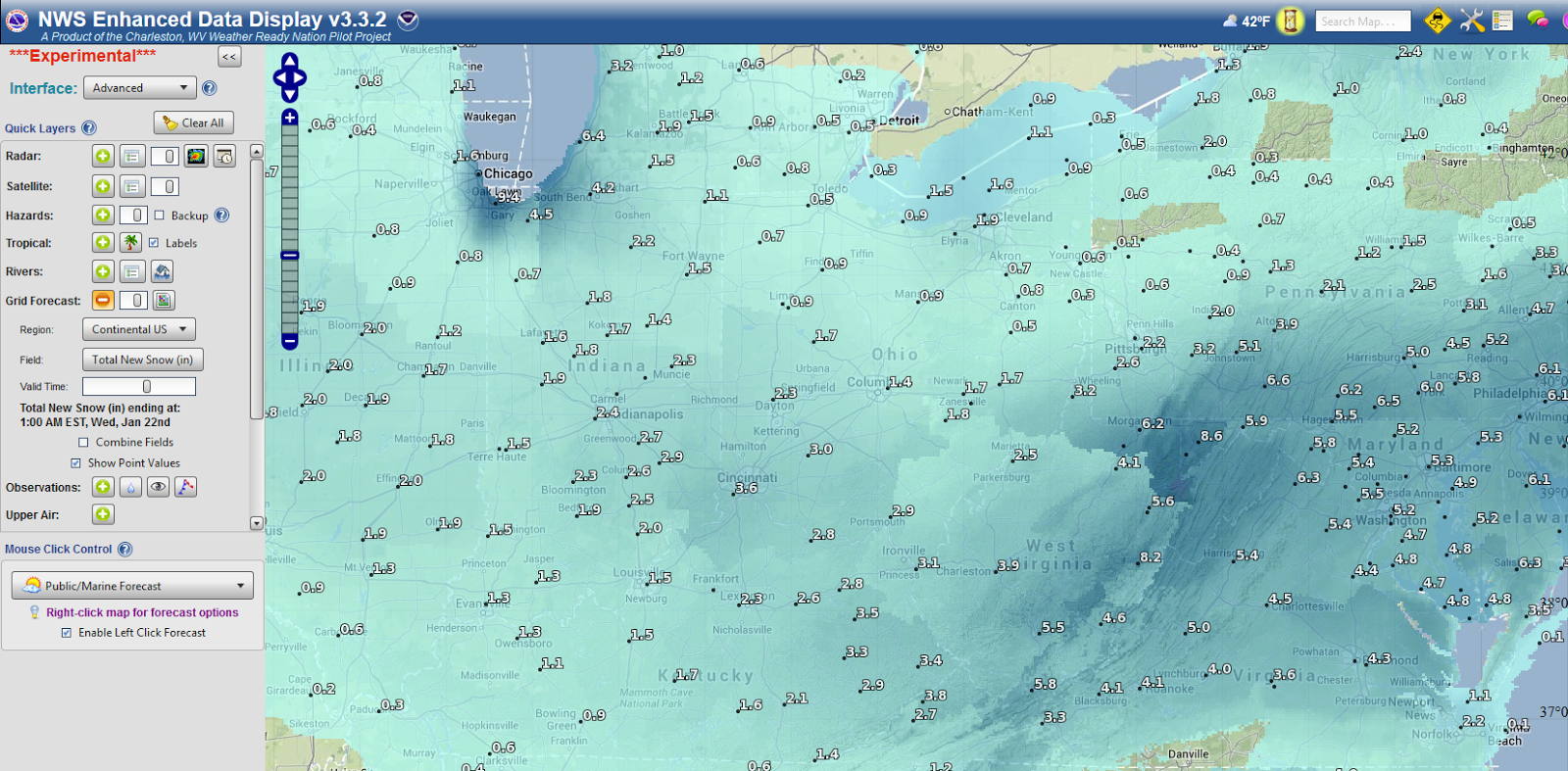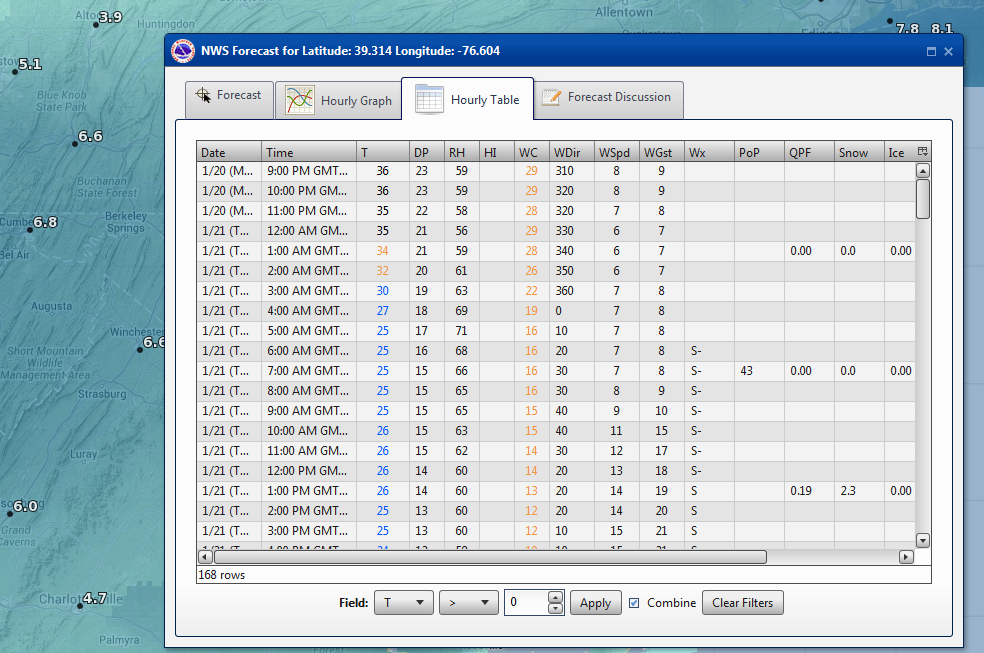More snow is on the way for the east coast, but it is not the 5 to 6 inches of snow that has me excited! Weather forecasts and data are probably one of the best examples of an open-source philosophy. Sure there is privatization, since there is always a new innovation or buck to be made, but the amount of data collection, visualization, and analysis is growing more and more impressive. Even large companies such was the Weather Channel
turn to open source.
Maps play a vital role in communicating location-based weather-related risks. A lot of web-based weather maps and and apps are out there. I won't dare creating a list, since I will probably miss your favorite. A quick Google search even reveals
OpenWeatherMap.org complete with an API.
The National Weather Service (NWS) has several different open web-based mapping options. Most recently, I stumbled upon their ESRI-based app:
NWS Enhanced Data Display. Since it is a simple, easy-to-use well designed app, it is worth a blog post! Click on the image below to magnify the screenshot. It is an improvement over other NWS products and similar maps out on the web, because it is designed with the user(s) in mind.
 |
| The NWS Enhanced Data Display - Snow Predictions |
First, different types of users--whether concerned with basic hazards, fire, marine, or aviation risks, can be selected. The choice of user changes the app to focus on what different users need to see (and more importantly what they don't need to see!). Brillant!
Clicking on individual weather stations, or searching for one, brings up all the needed forecasts and hourly graphs. Users can also add their own map files and draw polygons to get forecasts for specific regions, which may cross several state boundaries. There are also some basic storm-tracking/analytical functions such as a storm's time of arrival. Lastly, when a user is done, they can even share the map by clicking a "Save/Share" button at the bottom of the screen. A small url is generated and can be shared.
 |
| Hour-by-Hour Predictions... |
Overall, a simple weather map that is easy to use is one that will be used more! So, next time you hear your local forecast, don't forget to log-on to the the web to check out the specifics and even share a map with family and friends!
Also check out:
NWS GIS Data Portal
NWS Aware Report







